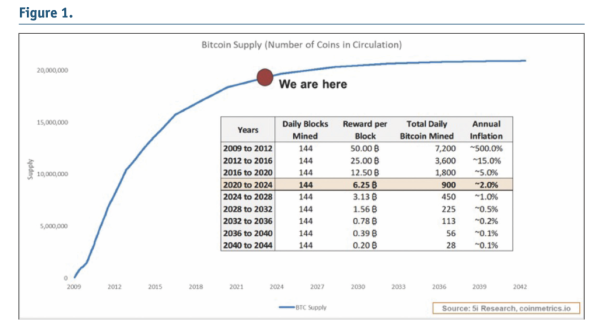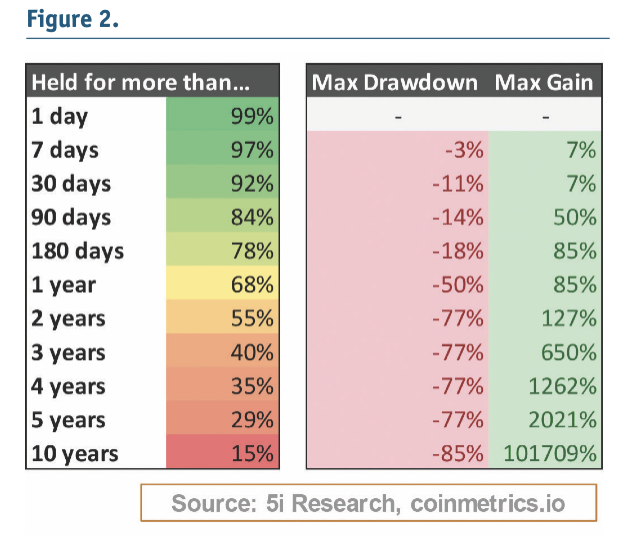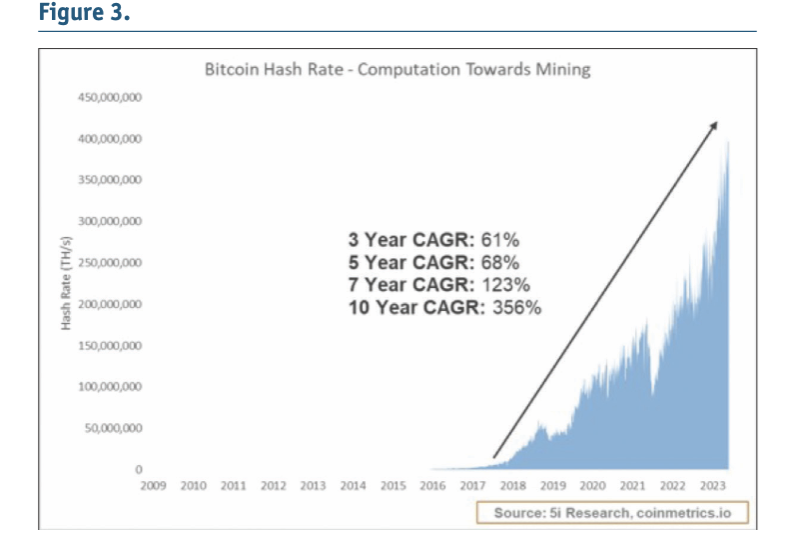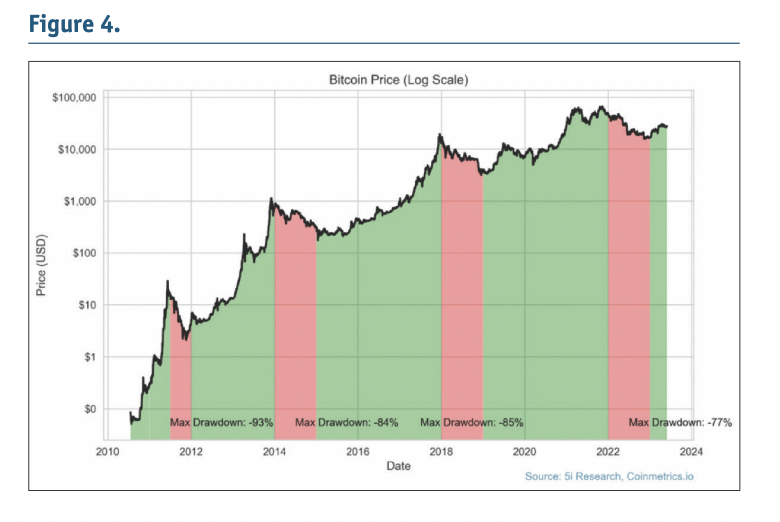A Crash Course In Crypto Bitcoin Part 2 – Everyone is a Skeptic at First
Bitcoin 101
In our last article, "A Crash Course in Crypto", we discussed the different types of crypto networks, how blockchain functions, and why miners exist. In this article, now that we have a working knowledge of how blockchains operate and the fact that these coins are all networks, we will be discussing the various merits that Bitcoin has, how to analyze and understand its network properties, and its intense price resiliency.
Bitcoin was created in early 2009 by a pseudo-anonymous individual/group of individuals/entities named Satoshi Nakamoto. It began as a network that allowed individuals to mine bitcoins, which at the time had no value, no price tag, only an ideology, and has since grown to a network with a high price tag and a growing userbase and list of miners.
Bitcoin is a monetary network which is underpinned by blockchain technology (discussed in our previous article), its network is open source (can be verified by anyone), it is fully transparent (all transactions and user accounts are visible to the public), and available to use by anyone (non-partisan). Here are three critical points about Bitcoin:
- Similar to the distribution of information that the decentralized internet brought, Bitcoin allows for the distribution of value across a decentralized network.
- There is certainty in its supply schedule. It is programmed into Bitcoin's code that there will only ever be 21 million coins in existence and that the rate of issuance of new coins diminishes roughly every four years. The number of bitcoins that can be mined each day is pre-determined by code, and unlike oil, gold, or other commodities, as the price of bitcoins rise, an increase in Bitcoin miners does not equate to an increase in bitcoins produced per day, month, or year. It is one of the very few financial assets in the world that cannot easily or rapidly expand its supply.
- It is the world's first purely digital commodity. In an ever-increasing technology and internet-based world, Bitcoin is one of the world's first digitally-native financial assets not owned by a specific individual or entity.
Bitcoin's value proposition can be boiled down to a simple function of supply and demand. Its core value is that its supply will never exceed 21 million coins and that the rate of new coins being mined will diminish over time. This increasing level of scarcity is one of its primary benefits, and in the following sections, we are going to discuss the supply, demand, and price aspects of Bitcoin.
Supply
The bitcoins are capped at 21 million. There will only ever be 21 million bitcoins in circulation, and currently, there are just over 19 million in circulation. Bitcoin's code has been programmed so that exactly 144 blocks (blocks discussed in our previous article) are mined each day. The number of bitcoins that a miner receives for solving a block is halved every four years. At Bitcoin's inception, a miner received 50 bitcoins per block solved, for a total daily issuance of 7,200 new bitcoins in circulation each day, whereas today, 14 years later, only 6.25 bitcoins are received for each block solved, for a total of 900 new bitcoins issued each day. The total number of bitcoins in existence has increased from 0 in 2009 to just over 19 million today, and due to the supply schedule mentioned above, the remaining ~3 million coins will be mined over the next ~100 years.
While 21 million coins might sound like a lot, it means only roughly 0.003 bitcoin per person on the planet, 0.37 bitcoin per millionaire on the planet, or one bitcoin per millionaire in the U.S. As discussed previously mentioned, Bitcoin’s supply is inelastic to changes in the number of miners. For example, as we can see in Figure 1, 900 bitcoins are mined each day currently. Bitcoin's software is designed so that regardless of whether there are 100 Bitcoin miners or 100 million Bitcoin miners, only 900 bitcoins will be mined each day. This implies that if bitcoins price doubles overnight, a rapid influx of miners attempting to capitalize on the price increase will not increase the current supply above and beyond what is already programmed. Therefore, its price does not have to adjust based on an increase in supply, unlike how gold or oil behaves.

Demand
The demand aspect of bitcoins is where most investors and individuals are left scratching their heads; why would anyone want to own Bitcoin? Well, there are several reasons why individuals opt to purchase bitcoins:
First, recall Bitcoin's supply structure is vital in understanding its importance. Bitcoin's supply structure of a hard cap on its circulating supply and the diminishing rate of issuance of new coins allows it to be a store of value. Global currencies naturally devalue and lose their purchasing power over time due to inflation. A store of value helps to combat this natural decay in the value of a nation's currency, hence gold's historical importance in the financial sphere. However, in a digital era, having a purely digital commodity rather than one that is in a physical form first and then later digitized (gold), is important. What makes Bitcoin unique compared to gold is that it is digitally-native—born on and from the internet.
Several nations across the world are experiencing hyperinflation (annual inflation rates above 50%) and purchasing stores of value such as the S&P 500, gold, or other financial assets may be more difficult and may have a higher regulatory hurdle than using the open-source, fully transparent, and widely available monetary network of bitcoins.
Unlike virtually all other digital properties that individuals purchase and use today, Bitcoin is not owned or operated by a central entity, company, or individual. There are no headquarters, no CEO, and no central authority. This is a unique feature of bitcoins that is unlike every other digital property that individuals own and hold today.
The previous points show a few reasons why individuals might buy and own bitcoins, and in the following graphs, I will illustrate with data the long-term demand for bitcoins.
Since the Bitcoin network is fully open and transparent, anyone can view the details regarding any and all Bitcoin addresses. In other words, the number of bitcoins held, how long they have been held for, when they have last been transferred, etc., are all public to the world. Therefore, we can analyze how long each bitcoin has been held by a single user and if that user has ever sold or bought bitcoins.
Our analysis shows that holders of bitcoin tend not to sell, and in fact, much of the bitcoin supply has never been sold, rather it has been held for more than two years. In Figure 2, we can see that 97% of all bitcoins in existence have been held for seven days or more. That's an easy one, seven days is not a long holding period. 68% of all bitcoins have been held for at least one year, never sold, and those individuals experienced a 50% maximum drawdown and an 85% maximum gain. 40% of all bitcoins have been held for three years or more, never sold, experienced a 77% drawdown, and a 650% maximum gain. Roughly one-third of all bitcoins in existence have been held for four years or more, have experienced a 77% drawdown, have experienced a 1262% maximum gain, and have never sold. Simply put, there is a large userbase of holders that, no matter what volatility is thrown at them, are not willing to sell.

The interest in mining and profiting from the spread between the price of bitcoin and the cost to mine bitcoin has grown rapidly over the years. The global hash rate (computational effort put toward Bitcoin mining) has increased substantially over the years, as demonstrated in Figure 3.

Price
Bitcoin has only been in existence for 14 years, and its price movement has been quite rhythmic and seasonal. As most of us are aware, Bitcoin's price is highly volatile and frequently experiences periods of booms and busts.
Between 2010 and mid-2011, the price expanded rapidly from zero to $30 and then witnessed a 93% drawdown to ~$2. It then expanded from $2 to just over $1,000 by 2014, followed by an 84% correction down to ~$200. Another expansion was witnessed in 2016 from $200 to ~$20,000, followed by an 85% correction to ~$3,000. Lastly, a boom period was experienced from ~$3,000 to ~$70,000 in 2021, which has since seen a ~77% drawdown in late 2022. Figure 4 helps to visualize the boom-and-bust cycles that have brought Bitcoin's price to where it is today, around $27,000.

There are many different notions about Bitcoin, some good, some bad, but stripping away the surface-level narratives and counterpoints at its core shows Bitcoin is an open monetary network that allows individuals to store value with full transparency into its supply structure, and it has a growing base of holders that are unwilling to sell, regardless of the volatility that is thrown at them.
Chris White, CFA, Analyst for 5i Research Inc.
Disclosure: The writer has a financial or other interest in Bitcoin.

